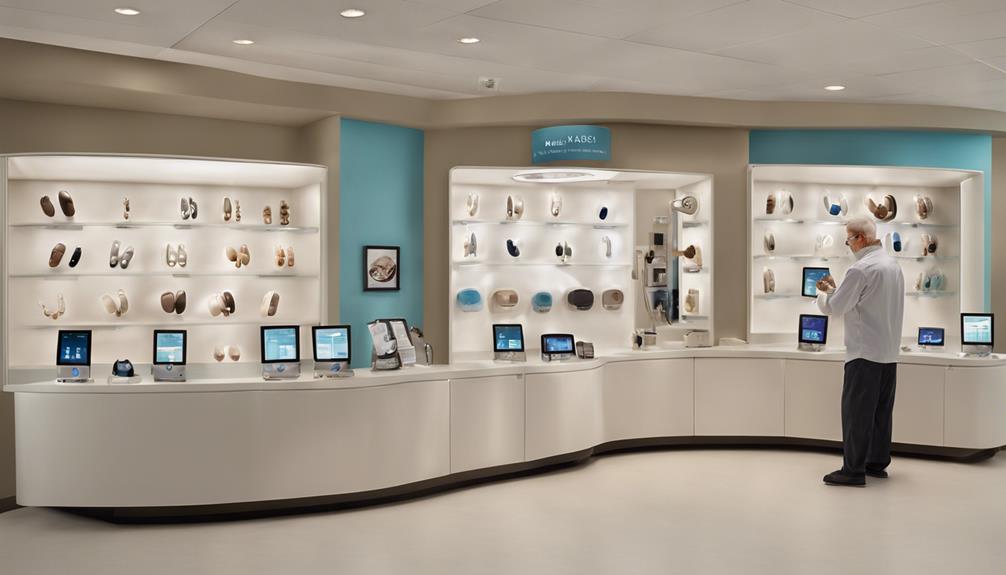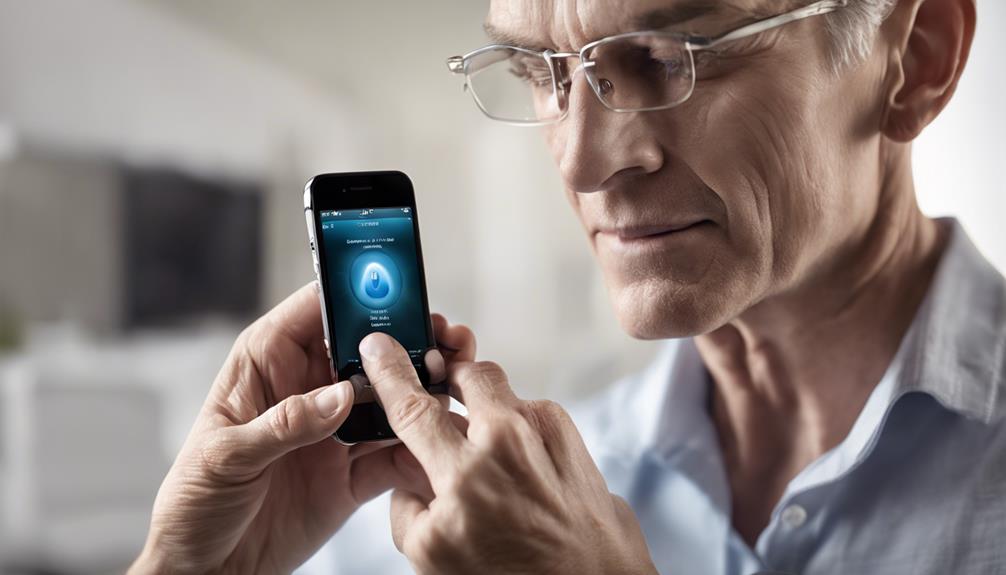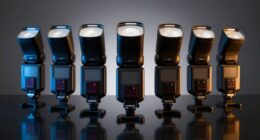Telecoil technology remains highly relevant today as it continually evolves to meet modern hearing needs. It offers clear, direct sound transmission, especially in public spaces with loop systems, and integrates well with wireless devices for seamless connectivity. While some alternatives exist, telecoils continue to serve many users effectively. If you’re curious about how these advancements can improve your hearing experience and what future trends may bring, there’s more to discover ahead.
Key Takeaways
- Telecoils remain essential for direct, high-quality sound transmission in public spaces with induction loop systems.
- Advances in telecoil design improve discreetness, sensitivity, and compatibility with modern digital hearing aids.
- Wireless streaming solutions offer alternative convenience, but telecoils provide reliable, interference-free performance.
- Regional infrastructure and awareness influence telecoil adoption, with higher relevance in areas with accessible public loop systems.
- Future trends include smarter integration, enhanced user control, and maintaining telecoil relevance alongside wireless technologies.
The Evolution of Telecoil Technology
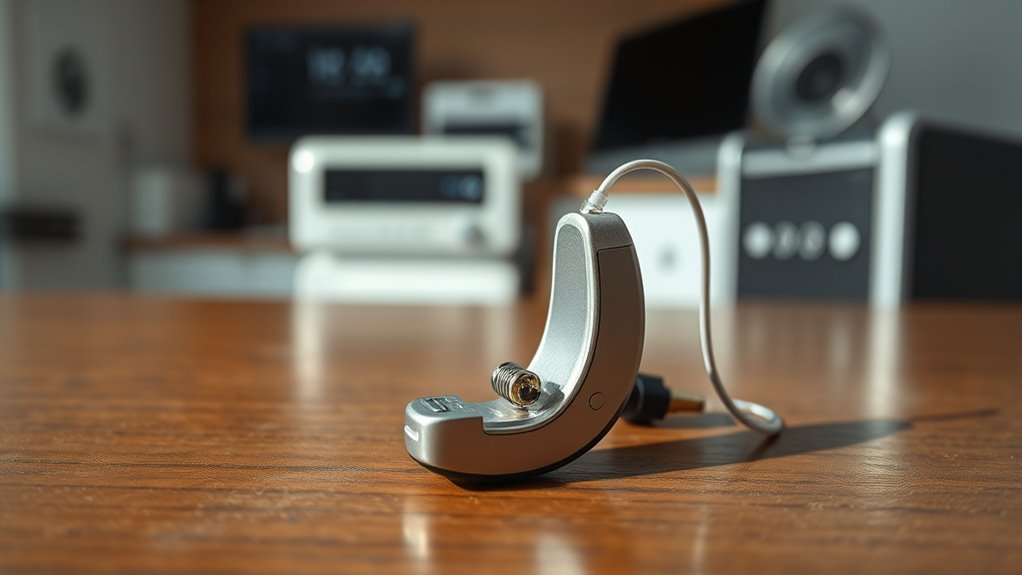
The evolution of telecoil technology has transformed how you access sound in challenging listening environments. Its historical development began with basic electromagnetic induction systems, gradually advancing as technology improved. Early telecoils faced regulatory challenges, including inconsistent standards and limited awareness, which slowed widespread adoption. Over time, manufacturers refined designs for better performance and compatibility, making telecoils more reliable and user-friendly. Regulatory bodies eventually established guidelines to guarantee safety and effectiveness, encouraging broader integration into hearing aids and assistive listening devices. These developments helped telecoils become a key solution for those needing clearer sound in noisy settings or during public events. Despite ongoing challenges, the continuous evolution of telecoil technology reflects its importance in improving hearing accessibility. Advancements in projector technology] continue to enhance visual experiences, paralleling the progress seen in hearing assistive devices.
How Telecoils Work in Modern Hearing Aids
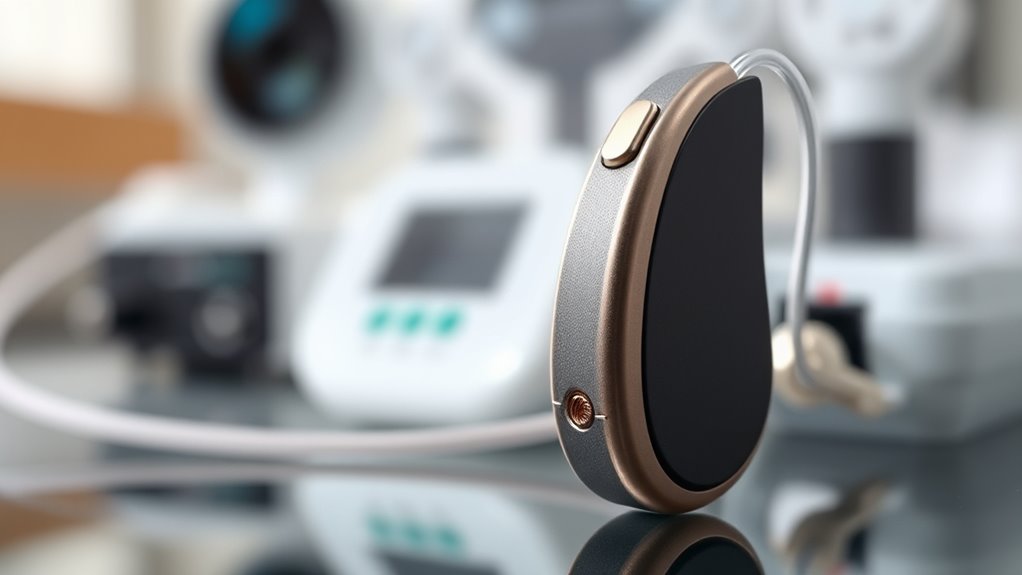
Modern hearing aids incorporate telecoils, or T-coils, to improve sound clarity in noisy environments. They work by picking up electromagnetic signals from compatible devices, such as loop systems in theaters or churches, directly transmitting sound into your hearing aid. This direct connection enhances clarity and reduces background noise, making conversations easier to follow. Telecoils are also cost-effective because they eliminate the need for additional accessories and reduce reliance on complex wireless technology. Additionally, they can be seamlessly integrated into sleek, aesthetic designs, ensuring your hearing aid remains discreet and stylish. This combination of functionality and appearance makes telecoils a practical choice for many users, especially those seeking affordable solutions without compromising on performance or appearance. The role of telecoils in improving hearing aid performance remains relevant as technology advances.
Comparing Telecoils and Wireless Solutions

When comparing telecoils and wireless solutions, you’ll notice differences in signal clarity and overall quality. Wireless options often provide a more consistent connection, but telecoils can be easier to use with existing public systems. Installation and convenience also vary, affecting how seamlessly each option fits into your daily routine. Additionally, understanding industry trends can help you make informed decisions about which technology best suits your needs.
Signal Clarity and Quality
Telecoils often deliver exceptional signal clarity because they pick up sound directly from a magnetic field, reducing background noise and minimizing interference. This noise reduction makes conversations clearer, especially in noisy environments. Unlike wireless solutions that rely on Bluetooth or radio signals, telecoils don’t suffer from signal dropouts or lag, ensuring consistent audio quality. However, their reliance on magnetic coupling means they don’t require batteries, so you won’t need to worry about battery life affecting performance. Wireless devices, on the other hand, often provide richer sound quality but may be limited by battery life and susceptibility to interference. If clarity and noise reduction are your priorities, telecoils still hold a significant advantage, offering a reliable, high-quality listening experience without the need for frequent charging. Additionally, specialized hearing aid features can enhance the overall listening experience for users who prioritize clarity.
Installation and Convenience
Installing telecoils typically involves embedding a coil into your hearing device or connecting it to an existing system, which can require professional setup but is generally straightforward. Once installed, telecoils offer reliable, direct access to compatible loop systems, making them convenient for daily use. However, installation challenges can arise if your hearing device isn’t compatible with telecoil technology or if building infrastructure isn’t optimized for it. Wireless solutions, on the other hand, often boast easier setup, with some devices connecting automatically via Bluetooth or other protocols, eliminating the need for professional installation. While telecoils rely on physical compatibility and infrastructure, wireless options provide greater flexibility and compatibility with various devices. Ultimately, your choice depends on ease of installation and the available infrastructure at key venues.
User Experience and Satisfaction With Telecoils

You’ll notice that telecoils often provide clearer sound, making conversations easier to follow. They’re also simple to operate, so you won’t have to juggle multiple devices. Overall, many users find telecoils enhance their listening experience and boost satisfaction. Additionally, advancements in hearing aid technology continue to improve telecoil performance and integration.
Listening Clarity Improvements
Enhanced listening clarity is one of the key reasons users experience greater satisfaction with telecoils. They improve understanding in noisy environments by directly capturing sound from the source, reducing background noise. This focused signal boosts speech clarity, making conversations easier and more comfortable. However, some users notice that background noise can still interfere, especially in highly crowded settings. Additionally, telecoil use impacts battery life, requiring more frequent charging or battery replacement. To highlight this, consider the following:
| Benefit | Challenge | Solution |
|---|---|---|
| Clearer speech | Background noise | Advanced filtering tech |
| Better comprehension | Battery drain | Improved power efficiency |
| Reduced fatigue | Signal interference | Enhanced telecoil design |
Ultimately, these improvements foster user satisfaction by delivering clearer sound despite some trade-offs. Telecoil technology continues to evolve, aiming to address these challenges and further enhance user experience.
Ease of Use
Because telecoils are designed to simplify the hearing process, many users find them straightforward to operate, especially with minimal training. Activating a telecoil usually requires just a quick switch, making it easy to access clear sound without complicated setup. Voice recognition features can enhance the experience by automatically adjusting the hearing aid to optimize telecoil use, reducing the need for manual adjustments. Battery life is also a key factor in ease of use; longer-lasting batteries mean fewer interruptions and more reliable performance throughout the day. Overall, telecoils offer a user-friendly experience that appeals to those seeking seamless integration into everyday environments. With simple operation and minimal fuss, they continue to provide a satisfying hearing solution for many users.
Accessibility and Public Loop Systems
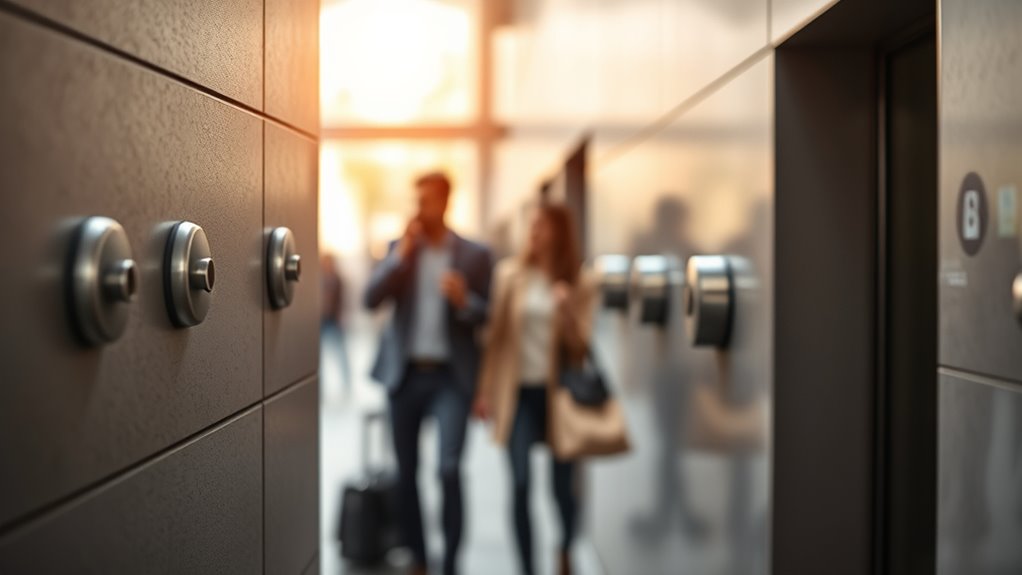
Public loop systems play a essential role in making audio content accessible to individuals with hearing impairments. They provide a seamless way to transmit sound directly to hearing aids equipped with telecoils, enhancing clarity in public spaces like theaters, churches, and transportation hubs. However, privacy concerns may arise, as signals are broadcast openly within a loop, potentially allowing others to listen in if not properly secured. Aesthetic considerations also come into play, as visible loop installations can impact the look of a space. Despite these challenges, public loop systems continue to be an effective accessibility solution. They promote independence and inclusion, ensuring that those with hearing aids can access important audio information without reliance on additional equipment or intrusive setups. Additionally, understanding the Gold IRA Rollovers process can help individuals diversify their retirement portfolios for long-term financial security.
Recent Innovations in Telecoil Design
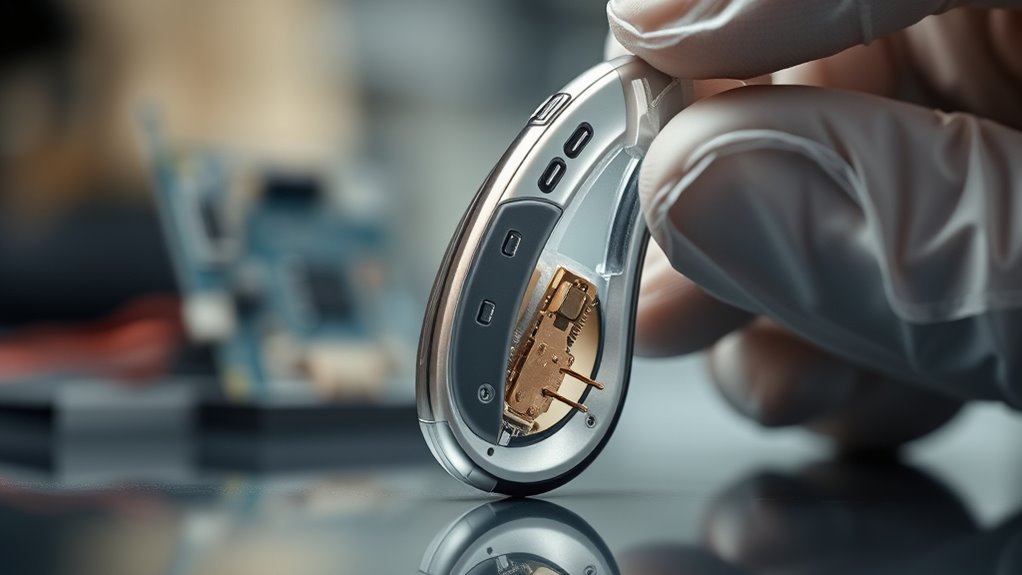
Recent innovations in telecoil design are transforming how hearing aid users access audio in public spaces. New designs focus on enhancing wireless compatibility, allowing seamless connection with smartphones and other devices. Battery efficiency has also improved, extending usage time without frequent charging. These advancements mean you get clearer sound and more reliable performance. Key innovations include:
- Smaller, more discreet telecoils that fit seamlessly into modern hearing aids
- Enhanced wireless compatibility with Bluetooth and streaming devices
- Improved coil sensitivity for better reception in noisy environments
- Longer-lasting batteries that support extended use without sacrificing audio quality
Additionally, the integration of customized dog names reflects the importance of personalization and user preferences in modern hearing aid technology. These innovations make telecoils more versatile and user-friendly, ensuring you stay connected and heard in a variety of settings.
Challenges Facing Telecoil Adoption

You may find that many people aren’t aware of telecoils or how they can improve hearing experiences. This lack of education makes it harder to promote adoption widely. Additionally, integrating telecoil technology into existing devices often faces technical hurdles that slow progress. For example, understanding electric power generation with bike generators can inspire alternative solutions for sustainable and accessible hearing aid accessories.
Limited Awareness & Education
One of the main obstacles to widespread telecoil adoption is the lack of awareness and education about its benefits and proper usage. Without sufficient public awareness, many users remain unaware of how telecoils can improve their hearing experience. Educational outreach efforts often fall short, leaving both users and audiologists uninformed. To bridge this gap, focus on:
- Increasing public awareness through targeted campaigns
- Providing all-encompassing training for audiologists and hearing aid specialists
- Creating easy-to-understand resources for users
- Promoting community events to demonstrate telecoil advantages
Addressing these areas can considerably improve understanding, ensuring more people benefit from telecoil technology and its potential to enhance hearing clarity.
Technological Integration Barriers
While increasing awareness and education are essential steps, integrating telecoil technology into existing hearing aid systems presents significant challenges. You may face integration challenges, such as ensuring the telecoil functions seamlessly with modern digital systems. Compatibility issues often arise, making it difficult for users to experience consistent performance across devices. These hurdles can lead to frustration, discouraging adoption. Maximize space and organization can help manage the technical accessories and components involved in telecoil systems.
| Challenge | Impact |
|---|---|
| Compatibility issues | Devices may not work well together, causing delays |
| Outdated hardware | Limits integration possibilities |
| Complex setup processes | Discourages users from utilizing telecoils |
| Lack of standardized standards | Increases compatibility problems |
| Limited manufacturer support | Reduces opportunities for seamless integration |
The Future of Hearing Assistance Devices

The future of hearing assistance devices promises to be more integrated, intelligent, and user-friendly than ever before. You’ll see seamless connectivity, smarter sound processing, and personalized features that adapt to your environment. However, privacy concerns will grow as devices collect more data to improve performance. Aesthetic concerns also remain, with sleek designs aiming to hide or minimize devices’ visibility. To deepen this evolution, consider:
- Enhanced AI integration for real-time adjustments
- Improved privacy safeguards to protect your data
- Stylish, discreet designs to address aesthetic concerns
- Advanced features that cater to individual listening preferences
These trends aim to make devices more effective while respecting your privacy and appearance, shaping a future where hearing aids are both powerful and unobtrusive.
Regional Variations in Telecoil Usage

Regional differences considerably influence how telecoils are used in hearing aids, with adoption rates varying based on infrastructure, regulations, and user awareness. Cultural differences also play a significant role, affecting how receptive communities are to new technology and how often users seek out telecoil features. In regions with well-developed infrastructure, such as accessible public venues equipped with induction loop systems, telecoil usage tends to be higher. Conversely, areas lacking this infrastructure see lower adoption rates. Regulations may also impact availability and promotion of telecoil technology, while awareness campaigns can boost user understanding and acceptance. Understanding these regional factors helps you recognize why telecoil usage isn’t uniform worldwide and highlights the importance of tailored strategies to increase adoption where it’s most needed.
Making the Most of Telecoil Features Today
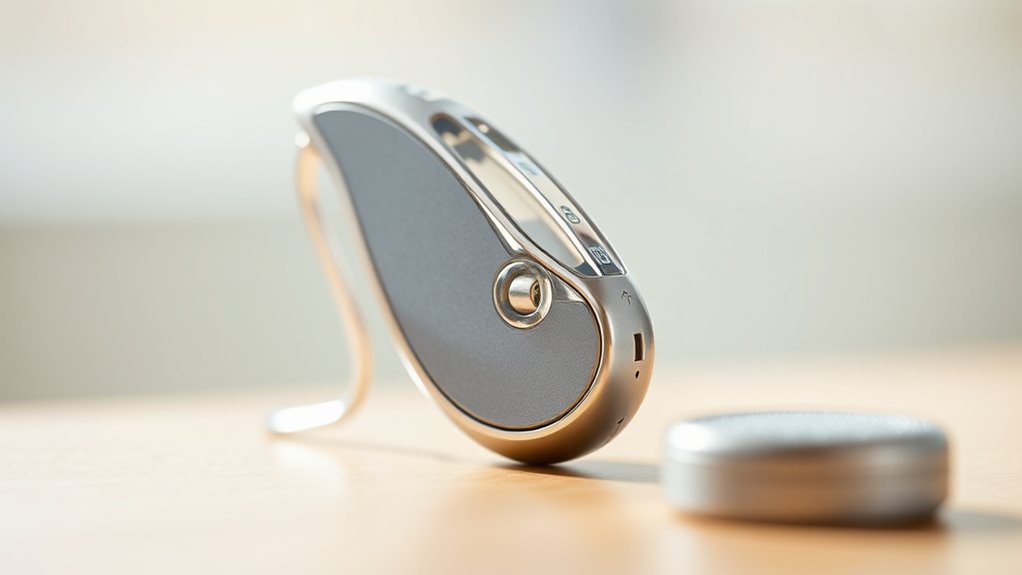
To maximize the benefits of telecoil features, you need to understand how to activate and optimize them in various listening environments. Start by exploring wireless connectivity options, which allow seamless pairing with compatible devices like smartphones and assistive listening systems. Next, adjust your hearing aid settings to prioritize telecoil mode for clearer sound. Be mindful of battery efficiency; using telecoil sparingly can extend your device’s battery life. Additionally, position yourself close to the source to improve sound quality and reduce background noise. Remember these key points:
- Enable wireless connectivity for versatility
- Optimize telecoil settings for different environments
- Conserve battery life by strategic use
- Maintain proper positioning for best sound clarity
Applying these steps ensures you get the most out of your telecoil features today.
Frequently Asked Questions
How Do Telecoils Compare to Emerging Hearing Aid Technologies?
You might wonder how telecoils compare to emerging hearing aid technologies. Telecoils provide direct wireless connectivity to loop systems, reducing background noise and improving clarity. However, new devices feature advanced noise reduction and Bluetooth connectivity, offering versatile streaming options. While telecoils remain useful in certain environments, modern hearing aids often deliver more seamless wireless experiences, making them more adaptable to various situations.
Are Telecoil Features Universally Compatible Across All Hearing Aid Brands?
Did you know that only about 60% of hearing aids support telecoil features? When considering universal compatibility, you’ll find that brand variability plays a big role. Not all hearing aids are created equal, so telecoil features may not work seamlessly across different brands. It’s important to check whether your device supports telecoils and if that support is compatible with your preferred listening environments, ensuring you get the most out of your hearing technology.
What Training Is Needed for Users to Maximize Telecoil Benefits?
You need proper user education and training programs to maximize telecoil benefits. Focus on teaching you how to switch your hearing aid to telecoil mode, recognize when it’s working correctly, and identify suitable environments like theaters or churches. Training should also cover troubleshooting common issues and understanding the advantages of telecoils. With the right education, you’ll confidently use telecoils to improve your listening experience and fully benefit from your hearing aids.
How Do Telecoils Impact Hearing Aid Maintenance and Durability?
Telecoils influence your hearing aid’s maintenance and durability by affecting battery longevity and user upkeep. When you regularly clean and turn off your device when not in use, you help preserve the telecoil’s function and extend battery life. Proper user maintenance, such as avoiding moisture and checking connections, reduces wear and tear. This proactive approach guarantees your telecoil remains effective, ultimately enhancing your hearing aid’s durability and consistent performance.
Can Telecoils Be Integrated Into Smartphone or Other Personal Devices?
You can definitely find smartphones and personal devices with built-in telecoil compatibility. This integration allows you to connect your hearing aids seamlessly, enhancing sound clarity in various environments. With device customization, you can tailor the settings for peak performance. Smartphone integration makes it easier to use telecoils daily, giving you more control and convenience without needing separate equipment, ensuring your hearing experience stays natural and effortless.
Conclusion
Despite the rise of wireless technologies, telecoils remain crucial, with over 50% of hearing aids still equipped with them worldwide. They provide reliable, cost-effective access to public loop systems, especially in noisy environments. As technology advances, integrating telecoils with newer solutions enhances user experience. If you’re considering hearing aids, don’t overlook telecoil features—they’re still pertinent and can markedly improve your connectivity and listening comfort today.






